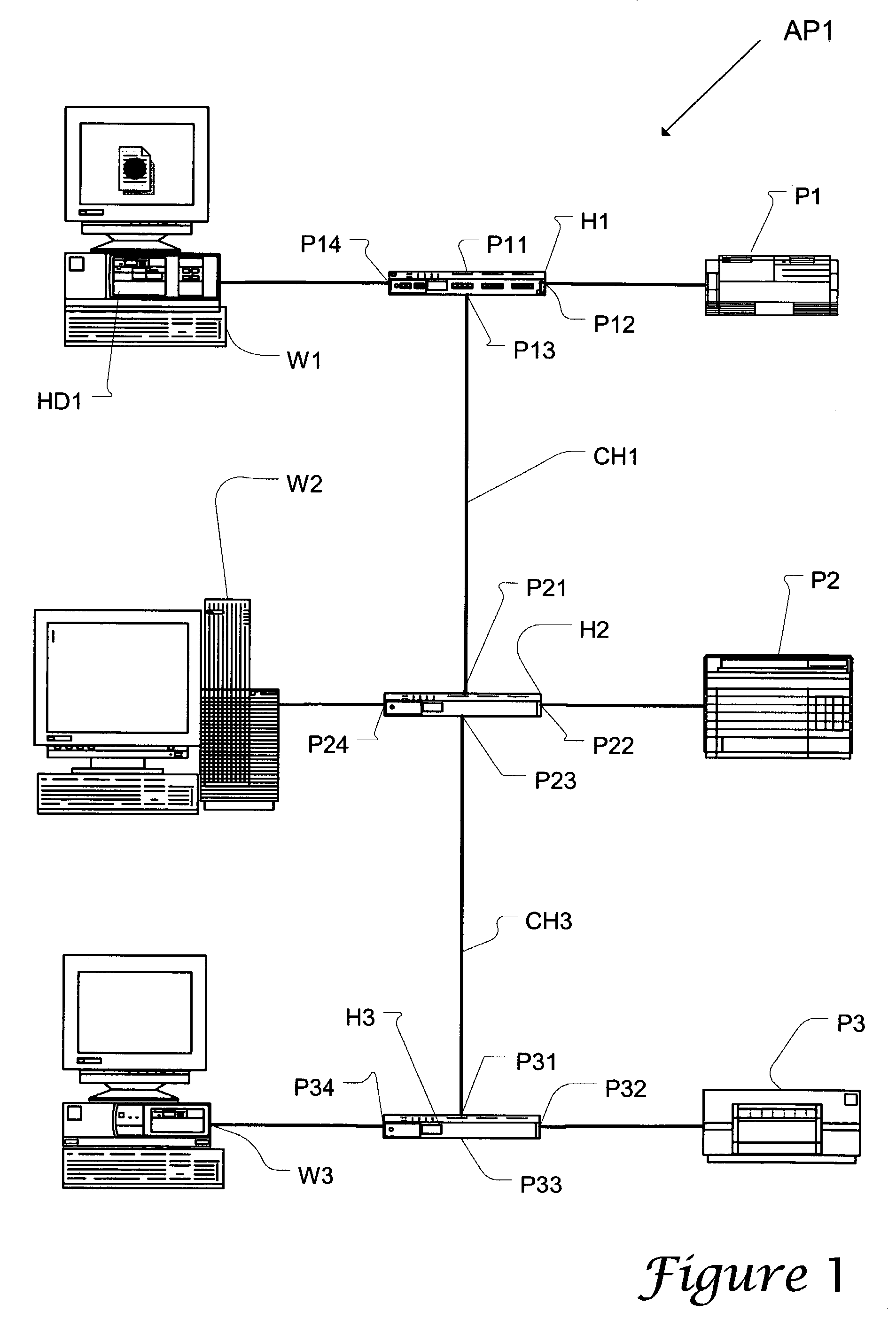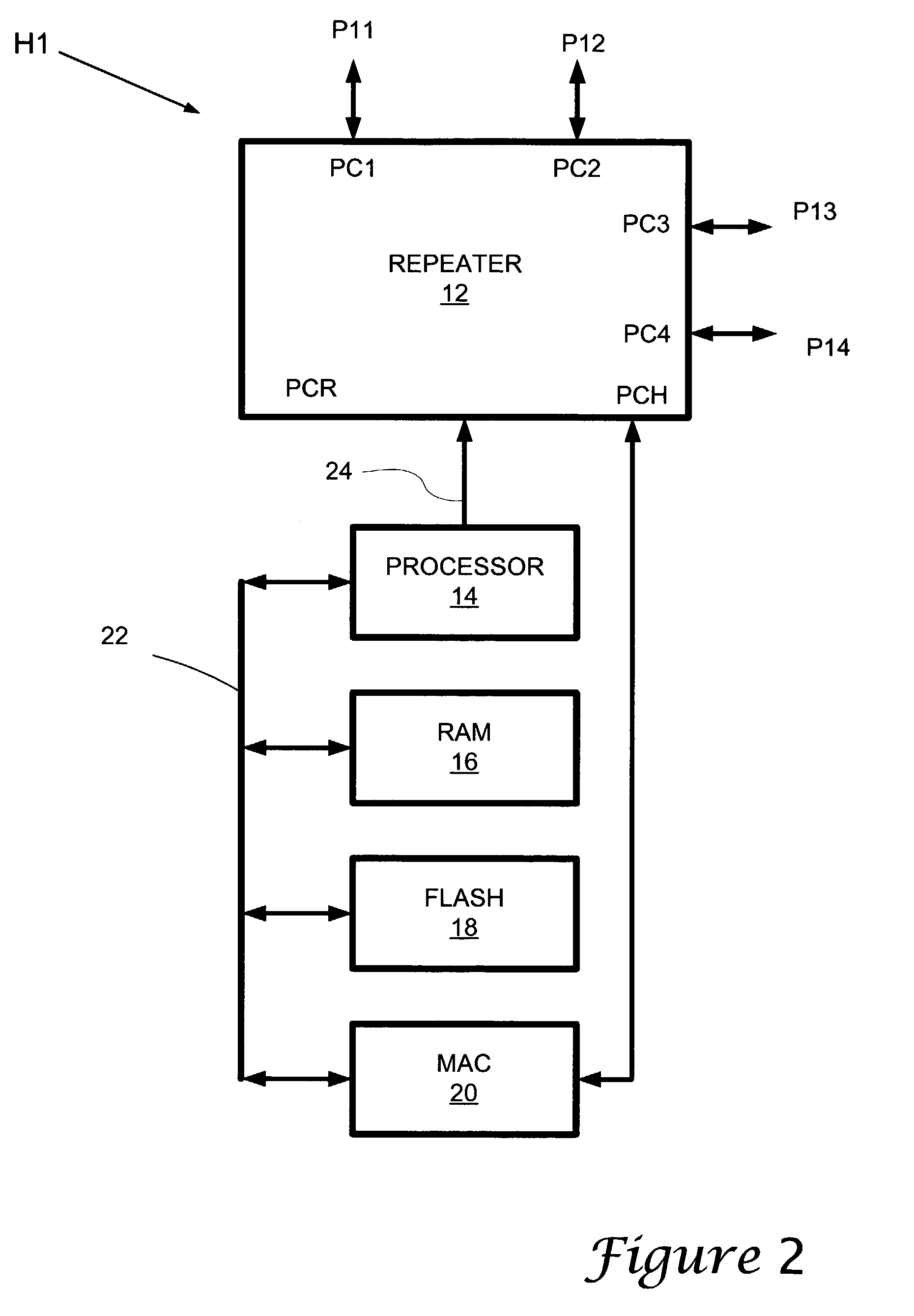Network appliance combining asynchronous notification with interactive network transfer protocol server
a network appliance and asynchronous notification technology, applied in the field of computer networks, can solve the problems of affecting productivity, affecting network performance, and affecting maintenance, so as to minimize the effort of the user in accessing information about the triggering event, minimize the burden on the network, and minimize the effect of network traffic directed to the network managemen
- Summary
- Abstract
- Description
- Claims
- Application Information
AI Technical Summary
Benefits of technology
Problems solved by technology
Method used
Image
Examples
Embodiment Construction
[0024]In accordance with the present invention, a network system AP1 includes three repeater hubs H1, H2, and H3, three computer workstations W1, W2, and W3, a monochrome laser printer P1, a color laser printer P2, and a color ink-jet printer P3, and eight cables. Six of the eight cables are coupled to the six node appliances W1, W2, W3, P1, P2, P3; the other two cables CH1 and CH3 couple hubs.
[0025]Hub H1 has four ports, P11, P12, P13, and P14. Port P11 is not being used. Port P12 is coupled to printer P1. Port P13 is coupled to hub H2 via cable CH1. Port P14 is coupled to workstation W1. Workstation W1 includes a hard disk HD1 on which a network management program and a web browser are stored.
[0026]Hub H2 also has four ports, P21, P22, P23, and P24. Port P21 is coupled to port P13 of Hub H1 via cable CH1. Port P22 is coupled to printer P2. Port P23 is coupled to hub H3 via cable CH3. Port P24 is coupled to workstation W2.
[0027]Hub H3 has four ports, P31, P32, P33, and P34. Port P3...
PUM
 Login to View More
Login to View More Abstract
Description
Claims
Application Information
 Login to View More
Login to View More - R&D
- Intellectual Property
- Life Sciences
- Materials
- Tech Scout
- Unparalleled Data Quality
- Higher Quality Content
- 60% Fewer Hallucinations
Browse by: Latest US Patents, China's latest patents, Technical Efficacy Thesaurus, Application Domain, Technology Topic, Popular Technical Reports.
© 2025 PatSnap. All rights reserved.Legal|Privacy policy|Modern Slavery Act Transparency Statement|Sitemap|About US| Contact US: help@patsnap.com



